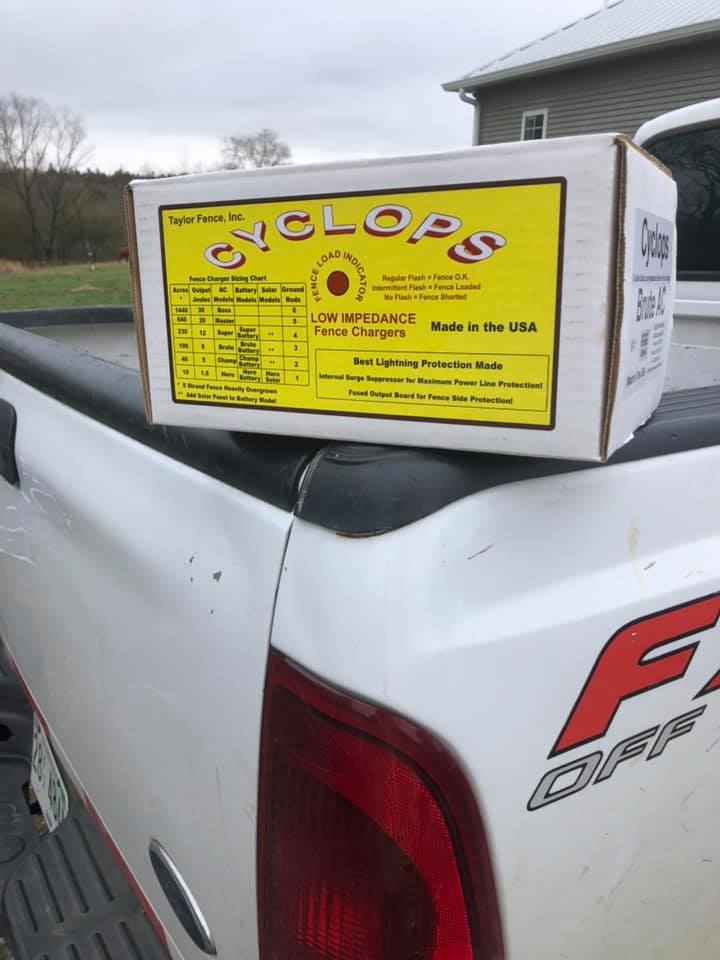Electric fencing can be used in many situations to effectively deter predators from various attractants. Applications include: beehives, fruit orchards, hunting camps, livestock enclosures, landfills and grain sheds.
Electric fences are easily adapted to most applications and can be installed temporarily or permanently. These fences are relatively easy to maintan and economical to build. However, they require routine inspection and maintenance to ensure proper operation and protection capability.
How an electric fence works
For electricity to flow in a system, such as an electric fence, there must be a complete and uninterrupted (closed) circuit. The electrical current must travel from its source (fence energizer) through the circuit (fence) and back to the source. This flow only occurs when a charged wire of the fence becomes grounded.
Under normal operating conditions, an electric fence functions as an incomplete (open) circuit with repeating pulses of electricity generated by the energizer sent through the charged wires of the fence. When an animal touches a charged wire, it grounds the fence, creating a closed circuit. An electrical pulse travels through the animal and back to the energizer, delivering a shock to the animal.
The electric shock is unpleasant to animals (and humans, too), but is not lethal. However, if an animal gets caught in a fence for an extended period, it may dies of stress. An electric fence is humane, since it can only shock the animal if it persists in making contact; once the contact is broken, the fence does not ‘spit’ at the animal.
Other objects and materials including vegetation, sticks, fallen trees and non-insulated posts in contact with charged wires can also create a partial or total closed circuit. This partial or closed circuit can result in a reduced electrical charge (voltage) and an inadequate shock to repel predators that contact charged wires of the fence. Fences should be checked and maintained regularly to address this potential problem.
Electric Fence Designs
An effective electric fence for predator control consits of:
-
a source of the high-voltage signal, called an “energizer”, that may be operated by a solar cell, a batter or, peferably, may be plugged into the domestic system -this generates short, highly peaked pulses of elctricity
-
a live wire, or wires, of high tensile steel that carry the pulses around the enclosed area
-
posts, that can be made of cedar, steel, or fiberglass, depending on budget and topography
-
a grounding system, starting at the energizer, one side of whose output is grounded through a system of low resistance ground rods, which should be carried along with the live wire around the enclosed area
-
insulation, to insulate the live wire from accidentl contact with the ground, whish would short it out, and render it ineffective
-
tension springs on long stretches, to limit the mechanical tension in the wires as they contract when air temperature drops
-
lightning protectors, since the live wires are exposed to lighning strokes and induction from power lines
For more detailed information on fence design and fence line selection and preparation:
The Living with Wildlife Foundation has prepared an excellent Electric Fencing Guide which contains information about electric fencing designs that can be used to help deter predators, including bears, mountain lions and wolves. Click to download.
Link – Electric Fence Manual by Stafix
Download – Protecting Livestock from Predation with Electric Fences, an Agri-Facts publication from the Alberta Department of Agriculture, Food and Rural Development.
Download – Tech Tips on Electric Fence Systems, a publication of USDA Forest Service
Landfills
Electrifying your landfill should, not only be mandatory, but should be one of your first considerations. A well-designed and properly installed electric fence will prevent bears from accessing your landfill. There are some special considerations that should be considered when electrifying such a highly attractive site. You will need to consider bears digging underneath the fence. To prevent digging, you can lay down horizontal fencing one foot below the surface.
Bears also have a habit of entering the gate when it is left open and often get caught inside. There are a couple of options to prevent access through open gates: (1) automatic sliding gates that open and close when the weight of a vehicle passes over the entrance, and (2) electrified cattle grate entrance. Of these two options, the second will be more effective and easier from a human-use standpoint.

